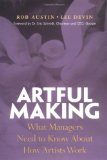 As a writer and editor, I’m acutely aware of the importance of language and metaphor in framing our experience. It has long been my opinion that our business cultures–and that includes software–have been profoundly affected (dare I say, infected?) by sports and combat metaphorage. We have teams, team players and coaches. We keep score and touch base. We have strategies, tactics and positions, and we can “win” things like market share.
As a writer and editor, I’m acutely aware of the importance of language and metaphor in framing our experience. It has long been my opinion that our business cultures–and that includes software–have been profoundly affected (dare I say, infected?) by sports and combat metaphorage. We have teams, team players and coaches. We keep score and touch base. We have strategies, tactics and positions, and we can “win” things like market share.
The problem with metaphors is that they can bring along unwanted associations as well. When we talk about business in terms of winning, we imply that it is at root a struggle for dominance, a zero-sum game. And while this may be true in certain segments of certain competitive industries, it is most untrue of software development, where the best ideas are often emergent ones that no one could have foreseen–including the people who came up with them.
What we need is a new metaphor for new product development, especially development that follows a heuristic path, such as agile software development.
Lee Devin, a well-known theatre-wonk, and Rob Austin, a business professor, have proposed an entirely different metaphor for the information age: the theatrical arts. Instead of a team, we have an ensemble. Instead of a leader, we have a director. We also have a tight deadline–opening night–and a goal of putting on the best production possible by that date, achieved by iterating over the play in rehearsal after rehearsal. Sound like agile? Devin and Austin think so, and they have written a book, Artful Making: What Managers Need to Know About How Artists Work, that aims to reframe our conversation about “knowledge work,” with specific reference to agile software development, in terms of art, not war.
Devin and Austin dismiss the “scientific” method as well, something Ken Schwaber also did when he pointed out that software development is an “empirical process” not a “defined process.” Devin and Austin declare that we are mis-labeling our activity when we talk of “experimenting.” An experiment, they claim, tests a known hypothesis, and is highly controlled. Instead, they prefer to model the process of serendipitous creation after improv. Try lots of things, don’t censor yourself, just be open to recognizing a good idea when you stumble upon it. The struggle to be agile is usually a struggle with this very issue–the battle against the internal censor, against the familiarity of Socratic debate, the reductive “yes, but.” It takes bravery and rigor to push aside what William James referred to as “the sentiment of rationality.”
Think a book about business and theatre sounds “soft”? If you doubt for a second how mind-expanding and stimulating a new metaphor can be, take their definition of collaboration, based on the convergence of an ensemble of actors, a director and a script: “The quality exhibited by conversation, in language and behavior, during which each party, released from vanity, inhibitions, and preconceptions, treats the contributions of other parties as material to make with, not as positions to argue with, so that new and unpredictable ideas emerge.”
Ideas as raw material, not “positions.” This is the difference between playing a game or fighting a battle, and making something. Which would you rather do all day?
Lee Devin and Tobias Mayer will be co-teaching Building Creative Agile Teams, as part of the Creative Edge Series of advanced agile courses, here in Redwood City on December 14-15.
